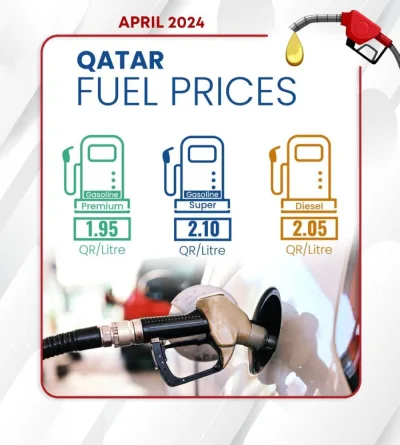AFP
Global commodity markets were gripped last week by the Malaysian air crash, which has dramatically raised tensions between Russia—a key producer of many raw materials—and the West.
The doomed Malaysia Airlines MH17 flight, which crashed killing 298 people on Thursday, was “likely downed” by a surface-to-air missile fired from separatist-held eastern Ukraine, a US envoy said Friday.
Investor sentiment was already hit by broadened US sanctions on Russian energy, defence and financial firms to punish what Washington charges are violations of Ukraine’s sovereignty.
“If Russia turns out to have played any part in (Thursday’s) shooting down of a passenger plane over east Ukraine, there is a risk of sanctions being further tightened,” Commerzbank analysts said in a research note.
“In this case, it would not only be gas prices in Europe that would react, but also the prices of oil, nickel, copper, aluminium, wheat and palladium—after all, Russia is one of the world’s biggest producers and exporters of these commodities.”
Traders also tracked fast-moving developments in the Middle East, where Israel has launched a ground assault on Gaza.
OIL: Crude futures rose following the plane crash, and as Israel pursued a ground offensive into the Gaza Strip.
“There has been high uncertainty across equity and commodity markets this week, which caused fairly high levels of volatility in the oil market,” Sucden analyst Myrto Sokou told AFP.
“Reports that a Malaysia aircraft had been shot down over the Ukraine yesterday triggered a spike in risk aversion and raised renewed concerns regarding political tensions between Ukraine, Russia and the West.”
She added that Israel’s assault on Gaza had also stoked oil supply worries in the crude-rich Middle East.
“Brent front month futures spiked above $108 per barrel in early trading (on Friday), supported by fresh concerns in Middle East,” Sokou said.
“However, market participants remained cautious, holding a wait-and-see approach to the issue.”
Ukraine’s government and western leaders have accused Russia of supporting the separatist rebellion in the country’s east, but Moscow has denied the allegations.
Ukraine is also a major conduit for Russian gas exports to Europe.
Investors are keeping a wary eye on events in Gaza after Israel began a ground operation late on Thursday, the tenth day of an offensive to stamp out rocket fire from the Hamas-run enclave.
The assault follows a brief humanitarian truce and an urgent appeal by Washington and the UN that Israel redouble its efforts to avoid harm to civilians.
By Friday on London’s Intercontinental Exchange, Brent North Sea crude for delivery in September rose to $107.66 per barrel from $106.99 for the August contract one week earlier.
On the New York Mercantile Exchange, West Texas Intermediate or light sweet crude for August jumped to $103.72 a barrel from $101.35.
PRECIOUS METALS: Gold prices faced a rollercoaster ride last week, hitting a three-and-a-half-week low on Tuesday before surging Thursday on safe-haven demand.
“The news from east Ukraine has caused the safe-haven that is gold to rise noticeably for a time,” said Commerzbank analysts.
“At its peak, gold increased by more than $20 per troy ounce (to a high point of $1,324.55 on Thursday ) though it shed these gains to some extent.”
Gold is widely regarded as a safe bet by investors in times of geopolitical turmoil. Palladium forged a new 13-year pinnacle at $889.30 per ounce—last seen on February 23, 2001 - propelled by fears over supplies from Russia, which is the world’s top producer.
“Any potential supply disruptions (due to sanctions on Russia) will keep palladium bid in a market expected to record large deficits,” said Standard Bank analyst Walter de Wet.
Palladium had also won support in recent weeks from strikes in key producer South Africa, but the industrial action ended last month.
By Friday on the London Bullion Market, the price of gold fell to $1,307.25 an ounce from $1,335 a week earlier.
Silver decreased to $20.94 an ounce from $21.41.
On the London Platinum and Palladium Market, platinum declined to $1,497 an ounce from $1,506.
Palladium advanced to $881 an ounce from $867.
BASE METALS: Base or industrial metal prices enjoyed mixed fortunes in cautious trade amid stronger-than-expected second quarter growth in key consumer China.
China’s National Bureau of Statistics said the economy grew by 7.5% in April-June thanks to government stimulus measures.
That figure beat the 7.4% expansion in the previous three months and exceeded a median forecast of 7.4% from a survey of 17 economists by AFP.
“It looks like the market was cautious about Chinese growth,” noted Triland Metals analysts.
By Friday on the London Metal Exchange, copper for delivery in three months fell to $7,031 a tonne from $7,125 a week earlier.
Three-month aluminium rose to $1,987.25 tonne from $1,934.
Three-month lead climbed to $2,196 a tonne from $2,194.50.
Three-month tin rose to $22,085 a tonne from $21,963.
Three-month nickel sank to $18,780 a tonne from $19,163.
Three-month zinc increased to $2,300.50 a tonne from $2,287.
SUGAR: Prices hit a three-month low in London at $445.60 per tonne, depressed by plentiful global supplies.
“Brazil production has been high so far this season as the drought has created some very good harvest conditions, but should tail off sharply as the harvest period progresses,” said Price Futures Group analyst Jack Scoville.
By Friday on LIFFE, London’s futures exchange, the price of a tonne of white sugar for delivery in October stood at $451 compared with $457.10 a week earlier.
On the ICE Futures US exchange, the price of unrefined sugar for October dropped to 16.98 US cents a pound from 17.16 US cents a week earlier.
COFFEE: Prices went off the boil, falling to a five-month low at 159.25 cents per pound in New York on hopes of a bumper harvest in main producer Brazil.
“The advancing harvest in Brazil is generating selling pressure, as 50% of the crop has already been brought in,” said Commerzbank analysts.
“What is more, dry and frost-free weather is forecast over the next few days in the coffee growing areas, which should also benefit the harvest.”
On ICE Futures US, Arabica for delivery in September slipped to 163.80 US cents a pound from 164.25 cents a week earlier.
On LIFFE, Robusta for September dipped to $2,000 a tonne from $2,015 a week earlier.
COCOA: Prices diverged in a narrow band.
By Friday on LIFFE, cocoa for delivery in September nudged upwards to £1,919 a tonne from £1,912 a week earlier.
On ICE Futures US, cocoa for September drifted down to $3,069 a tonne from $3,078 a week earlier.



